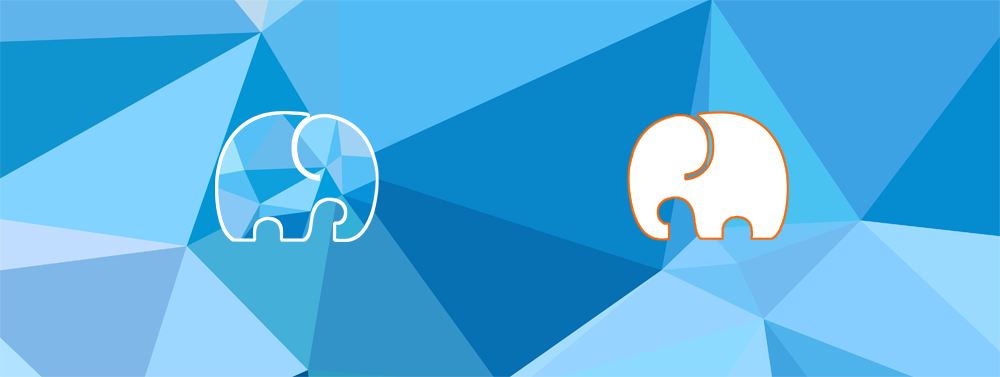
There is no universal sequence of ITAM implementation steps. But there is a backbone that can suit most companies. Not included in the "skeleton" of the project processes become the individual characteristics of the implementation.
In a previous post I shared my experience:
- where better to start the implementation of ITAM solutions;
- what to rely on when choosing an IT asset management model;
- what are the features of the basic stages of implementation.
In this article I want to continue the topic and tell:
- how to build a resource-service and resource-financial model of accounting for IT assets;
- what are the specifics of license and vendor management;
- what are the growth points.
What parts does IT asset management include?
The sum of the components of which the ITAM practice consists is conventionally called “S.L.ON.N.” These components include:
- agreements;
- licenses;
- equipment;
- intangible assets.
S.L.O.Na divide into large parts:
- identification and tracking of changes in IT assets;
- procurement planning and write-off of IT assets;
- building a resource-service and resource-financial models for accounting for IT assets;
- license and vendor management.
The specifics of the first two parts are analyzed in the previous article.
Today, through a prism of a goal → steps → results, I will review the remaining ones.
Building a resource-service and resource-financial models for accounting for IT assets
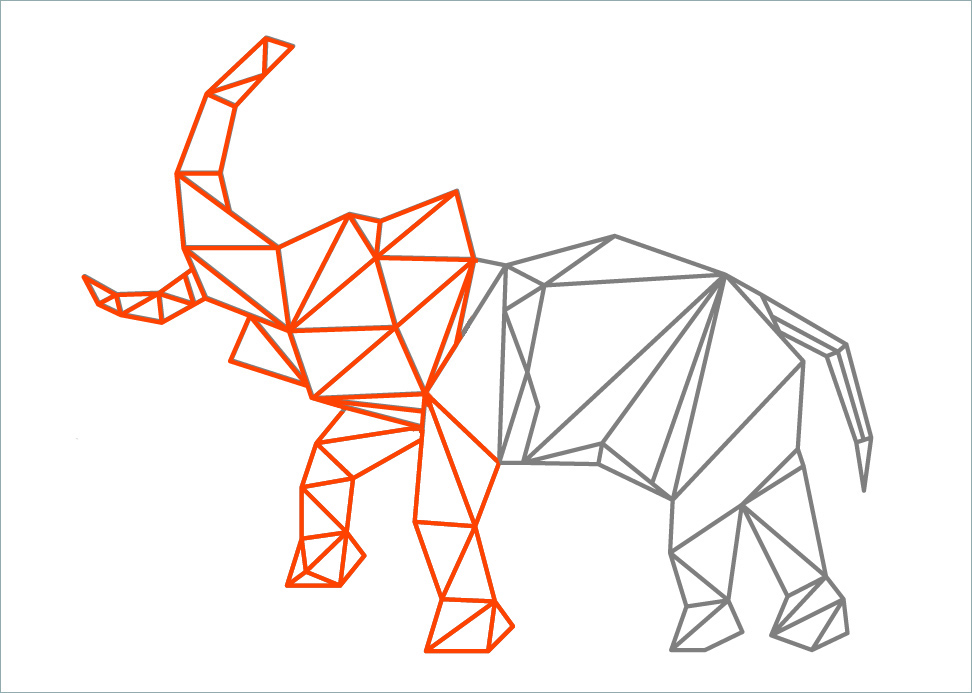
When information about IT assets is accumulated in the IT system, the vector of using this information can be expanded. We begin to take into account all contracts with contractors in which we incur costs for IT assets, we associate IT assets with the Fixed Asset.
What we want to achieve:
- Get information about the purpose of using IT assets (the work of which Service they support).
- Collect information about the cost of ownership of the IT asset and the cost of providing the Services.
- Develop cost planning mechanisms within budget lines.
What steps are performed:
- We download information on contracts, costs, depreciation and residual value of IT assets from accounting systems (linked through the Asset).
- We enter information about the links between IT assets, thereby forming a resource-service model.
- We use communication resource-service model and information from accounting systems to form a financial model for the allocation of costs for IT assets.
- We are planning an IT budget.
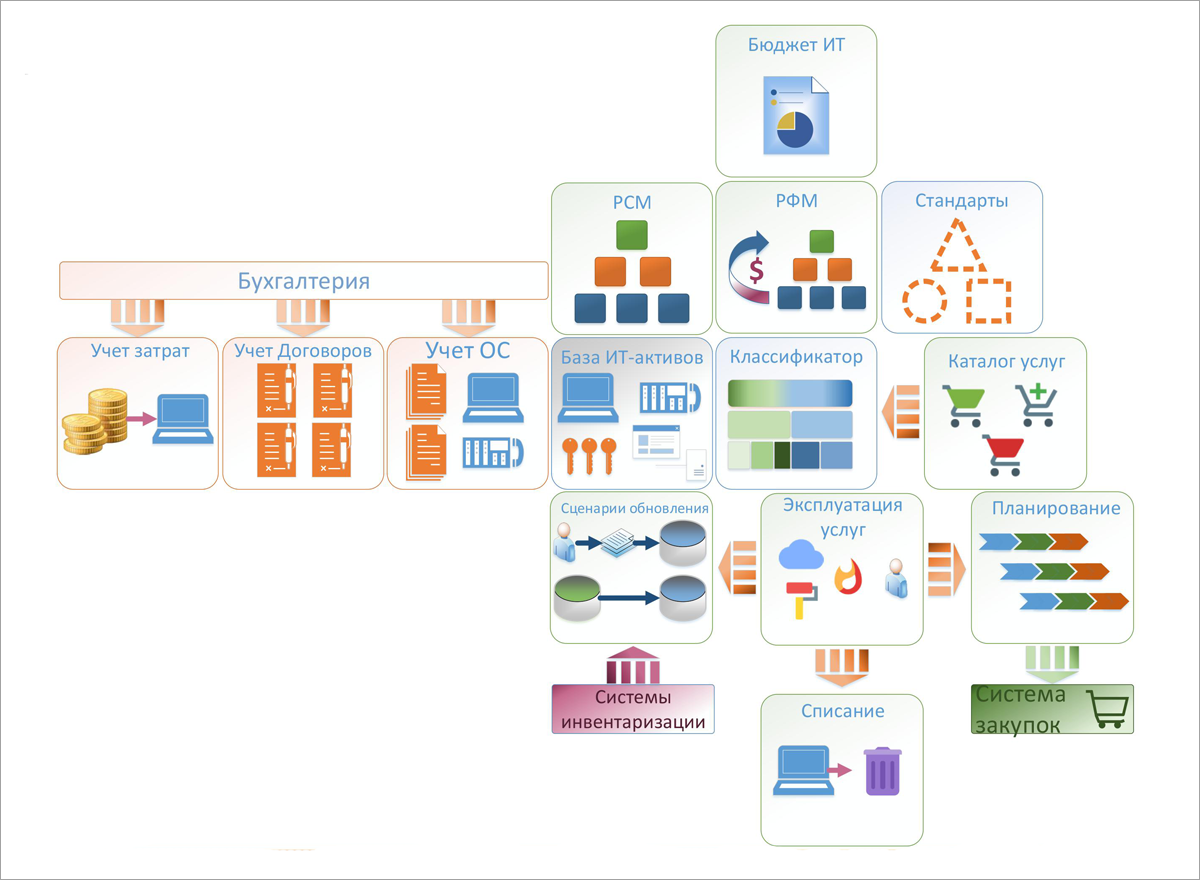
The result of the control purposes for the use of IT assets we get:
- Reduced idle IT assets.
- Control of critical IT assets.
- Improved asset utilization.
As a result of optimizing IT costs:
- The allocation of expensive services, activities and operations.
- Making a decision about outsourcing.
- Improved budget planning.
- Control budget execution.
License and IT asset management
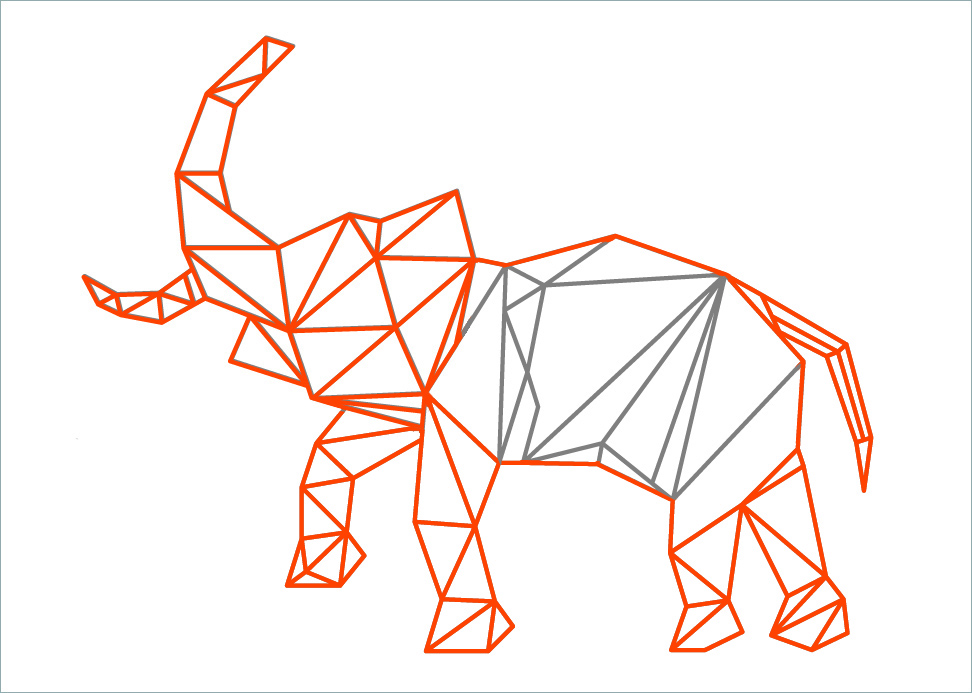
The next important step is to work with suppliers of IT assets. This is a separate part of the ITAM- "elephant", where we take into account all the obligations of suppliers, contracts with them, including the conditions of support.
Redefine the goals:
- Optimize license costs.
- Organize the process of controlling suppliers.
What we do:
- We collect data under licenses.
- We form a licensed model.
- We unify the rules of interaction with suppliers.
- We carry out categorization and measurement of the quality of cooperation with suppliers.
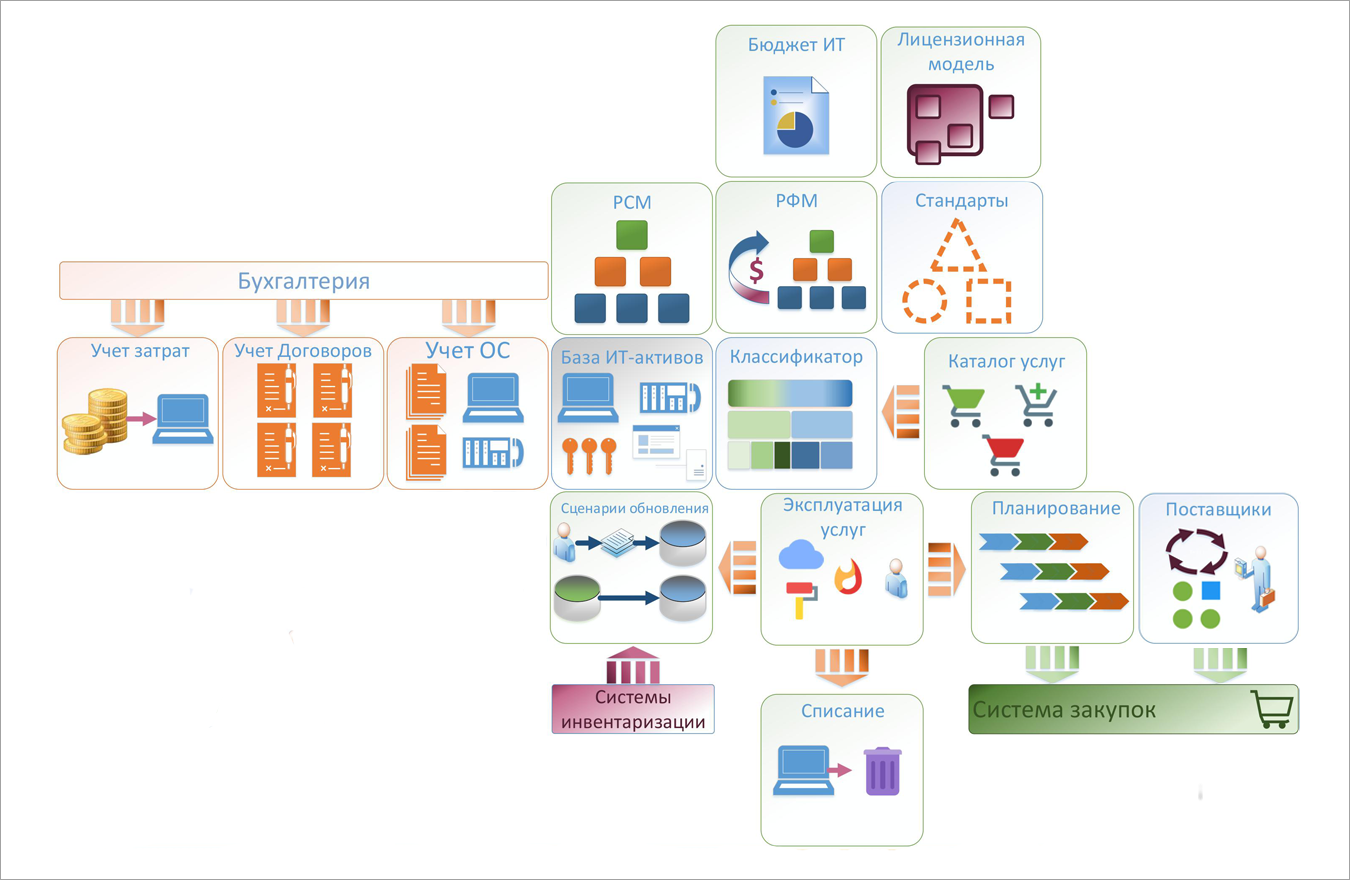
The result of optimizing license costs will be:
- Consolidation of licenses, search for more profitable licensing schemes.
- Reducing the number of licensed products, their unification.
- Improved licensing terms by consolidating information.
- Increase license utilization.
When organizing control over suppliers, we obtain:
- Measurable and transparent processes for working with suppliers.
- Cost savings through consolidation and standardization.
- Simplify Supplier Relationships.
- Contract management as an independent asset.
How to develop an IT asset management system
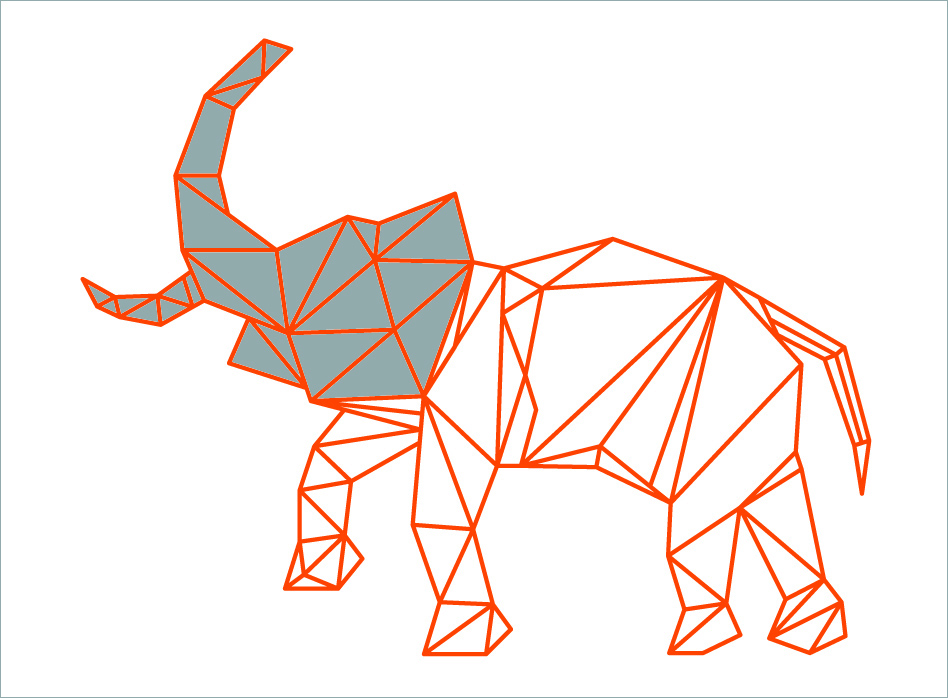
When large parts of the SLO.N.A are implemented and automated, you can think about the development of the IT system.
To the points of growth I attribute:
- Policy development - from requirements for suppliers to internal requirements. Support and development of corporate standards for IT assets.
- The use of IT assets in project activities - services, installations, licenses.
- Knowledge management in IT assets - a database of articles with typical solutions to incidents and service requests, documentation, instructions, FAQ
As a result, we obtain a multicomponent picture of the combined and interconnected parts of the ITAM- “elephant”.
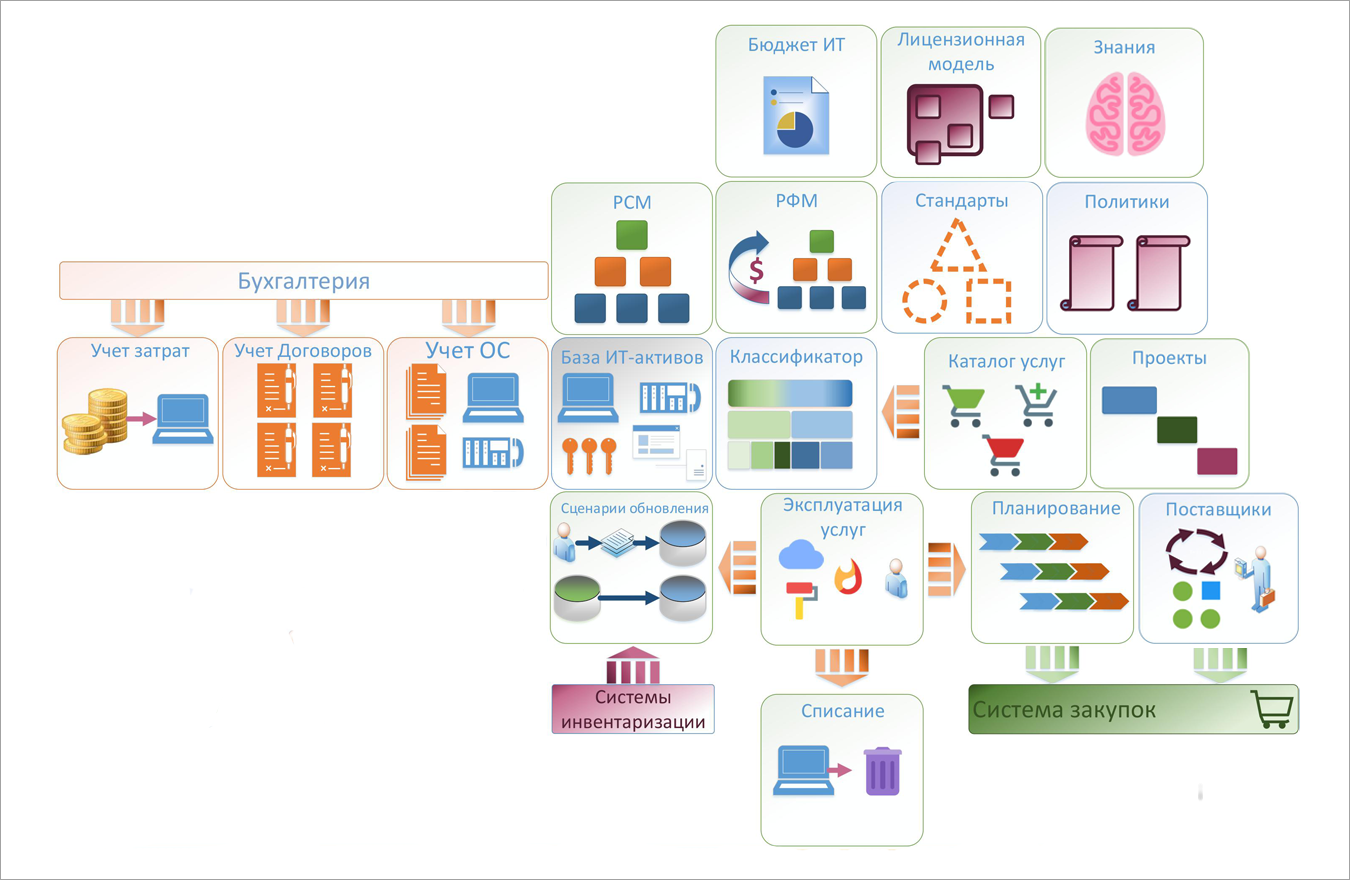
What is the result
Own practice of implementing ITAM-solutions pushes to the following conclusions:
- The IT asset management process is multicomponent.
- S.L.O.N.a can be “eaten”, but not entirely in one approach.
- Already at the start of implementation, it is necessary to determine what goals we are striving for and what steps we are performing at each of the stages.
- There are always points of growth, because ITAM is not limited to gathering information about IT assets and tracking their changes.
What to read:
There are S.L.O.N.a in parts. Implement ITAM and not choke (Part 1)
IT asset management: how myths affect projects
Implementation of ITAM-solutions: how to get rid of myths